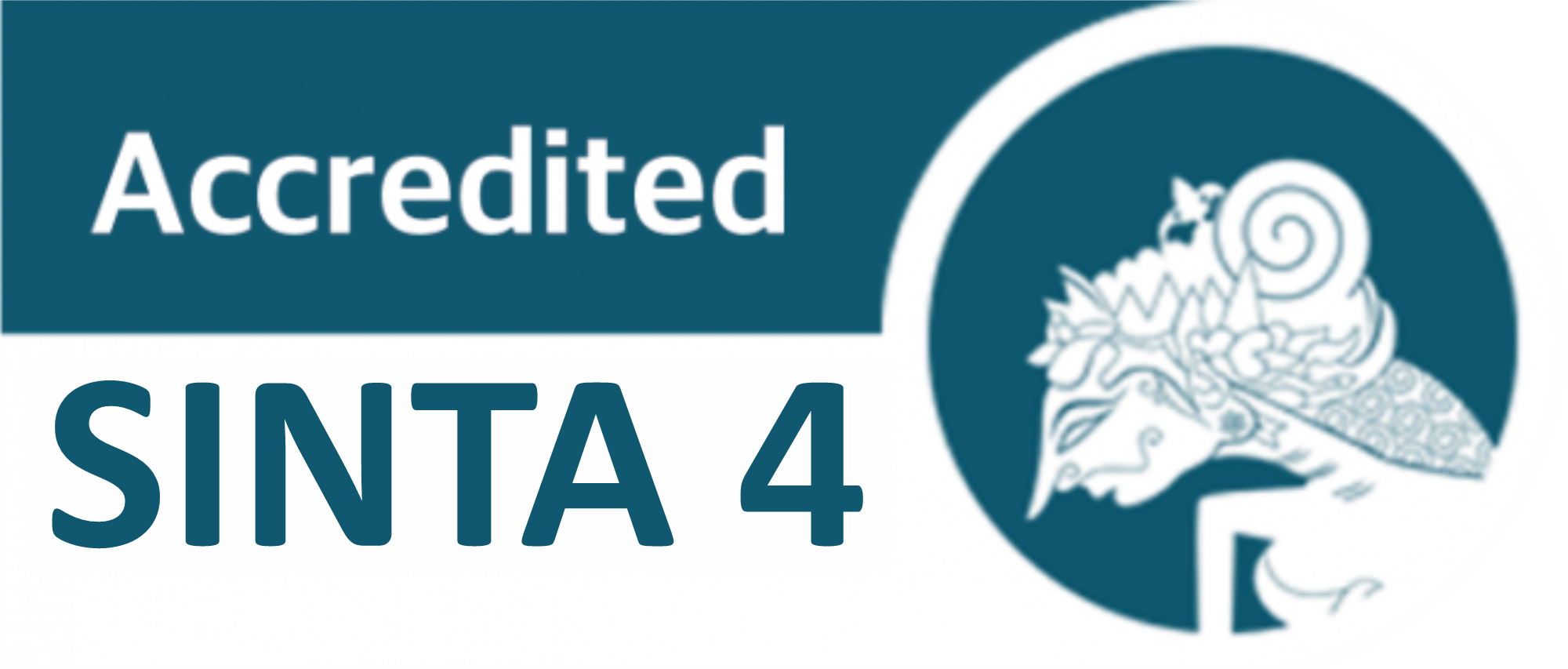Implementation of Batik Colouring Using Jengkol Peels Extract at Rang Minang Batik House in Padang Panjang City
DOI:
https://doi.org/10.24114/gr.v13i2.62157Keywords:
natural colouring, extracts, jengkol peelsAbstract
The use of synthetic dyes in the batik industry, considered practical and efficient, has had negative impacts on health and the environment. This study aims to explore the production and application of natural dye extracts from jengkol (Archidendron pauciflorum) peels as an alternative dye in the batik dyeing process at Rumah Batik Rang Minang. A descriptive qualitative approach was used, with data collection methods including documentation, interviews, and observation. The study results show that the jengkol peel extract is produced through a boiling process and applied to batik fabric using the dipping technique. The dyeing process involves soaking the fabric in jengkol peel extract and repeating the dipping to ensure color durability. The use of this extract produces a distinctive and long-lasting color, offering an eco-friendly solution for the batik industry.References
Alamsyah, Alamsyah. 2018. “Kerajinan Batik Dan Pewarnaan Alami.” Endogami: Jurnal Ilmiah Kajian Antropologi 1 (2): 136. Https://Doi.Org/10.14710/Endogami.1.2.136-148.
Amalia, Rizka, And Iqbal Akhtamimi. 2016. “Study On Effect Of Fixation Substance Types And Concentrations On The Quality Of Batik Color With Natural Dyeing From Rambutan Skin Waste (Nephelium Lappaceum).” Dinamika Kerajian Dan Batik 33 (2): 85–92.
Cahya, Nana Dwi, And Sri Zulfia Novrita2. 2023. “Menggunakan Kulit Bawang Merah Dan Kulit Buah Manggis” 12.
Delmasari, Pujiana, Sri Zulfia Novrita, Sumatera Barat, Tanah Datar, And Tanah Datar. 2024. “Natural Dyeing In Batik : A Case Study At Pariangan Batik House , Pariangan District Batik Merupakan Salah Satu Warisan Kebudayaan Yang Sangat Berharga Dan Telah Dunia . Menurut ( Arini & Ambar B , 2011 ) Kain Untuk Pakaian Yang Menjadi Salah Satu Perkemb” 26 (1).
Dewy, Sri Setiya, And Sri Zulfia Novrita. 2019. “Pengaruh Perbedaan Larutan Celup (Vlot) Terhadap Hasil Pencelupan Zat Warna Alam Ekstrak Bawang Dayak (Eleutherine Palmifolia (L.) Merr.) Pada Bahan Sutera Dengan Mordan Tawas.” Gorga : Jurnal Seni Rupa 8 (1): 248. Https://Doi.Org/10.24114/Gr.V8i1.13623.
Diba, Farah, And Urip Wahyuningsih. 2021. “Studi Literatur : Pelatihan Ikat Celup Sebagai Upaya Pemberdayaan Masyarakat Terhadap Penggunaan Pewarna Alam.” E-Journal Unesa 10 (1): 127–36.
Eskak, Edi, And Irfa’ina Rohana Salma. 2020. “Kajian Pemanfaatan Limbah Perkebunan Untuk Substitusi Bahan Pewarna Alami Batik.” Jurnal Industri Hasil Perkebunan 15 (2): 27. Https://Doi.Org/10.33104/Jihp.V15i2.6331.
Fitrihana, Noor. 2018. “Teknik Eksplorasi Zat Pewarna Alam Dari Tanaman Di Sekitar Kita Untuk Pencelupan Bahan Tekstil.” Jurnal Online, 1–8. Http://Staff.Uny.Ac.Id/Sites/Default/Files/132297145/Teknik Pembuatan Zat Warna Alam Untuk Bahan Tekstil Dari Tanaman Disekitar Kita.Pdf.
Fitrio, Maulidia Rahmah, And Agusti Efi. 2023. “Pewarnaan Alam Pada Benang Tenun Dengan Gambir:Studi Kasus Di Rumah Tenun Kubang H. Ridwan By” 7: 17503–11.
Hanifati, Idzni, And Sri Zulfia Novrita. 2023. “Teknik Pembuatan Ekstrak Warna Alam Dari Tumbuhan Dan Limbah Pasar ( Studi Kasus Di Rumah Batik Tarancak Kota Solok )” 7: 1370–76.
Kamala, Nia, And Adriani Adriani. 2019. “Studi Tentang Motif Dan Pewarnaan Batik Cap Dengan Zat Pewarnaan Alam Di Rumah Batik Dewi Busana Kecamatan Lunang Kabupaten Pesisir Selatan.” Gorga : Jurnal Seni Rupa 8 (2): 303. Https://Doi.Org/10.24114/Gr.V8i2.14703.
Nugraheni, Winda Tieneke, Ratna Endah Santoso, And Sarah Rum Handayani. 2020. “‘Lathak’ Limbah Zat Warna Indigofera Sebagai Pewarna Batik (Studi Kasus Di Rumah Produksi Batik Desa Cemani, Grogol, Sukoharjo, Jawa Tengah).” Ornamen 16 (2): 136–46. Https://Doi.Org/10.33153/Ornamen.V16i2.2929.
Prasetyo, Andika Dwi. 2020. “Kualitas Warna Kain Batik Dari Kulit Buah Dan Buah Dengan Variasi Lama Perendaman,” No. 1980: 573–79.
Pujilestari, Titiek. 2016. “Review: Sumber Dan Pemanfaatan Zat Warna Alam Untuk Keperluan Industri.” Dinamika Kerajinan Dan Batik: Majalah Ilmiah 32 (2): 93. Https://Doi.Org/10.22322/Dkb.V32i2.1365.
Purnaningtyas, Dwi, Novita, And Sriyanto. 2014. “Desain Eksperimen Pewarna Alam Batik Propagul Mangrove Dengan Tingkat Ketahanan Luntur Warna Yang Baik Dengan Bantuan Zat Fiksatif Tawas.” Industrial Engineering Online Journal, No. Volume 3, Nomor 2, Tahun 2014: 1–9. Https://Ejournal3.Undip.Ac.Id/Index.Php/Ieoj/Article/View/6702.
Putri, Fany Gustia, And Sri Zulfia Novrita. 2024. “Proses Pembuatan Ekstrak Warna Alam Di Rumah Batik Jajak Lilin Kecamatan Enam Lingkung Kabupaten Padang Pariaman Program Studi Pendidikan Kesejahteraan Keluarga , Universitas Negeri Padang.” Jurnal Pendidikan Tambusai 8: 10366–78.
Ramadhani, Yunisa. 2024. “Kajian Batik Gambir Sebagai Produk Batik Minangkabau Study Of Batik Gambir As Minangkabau Batik Innovative Product” 41 (1): 89–102. Https://Doi.Org/10.22322/Dkb.V41i1.8435.G6450.
Rhofur, M. Abdur. 2019. “Studi Etnobotani Pewarna Alami Batik Jambi Di Kelurahan Jelmu Kecamatan Pelayangan Kota Jambi.” Edu-Bio Jurnal Pendidikan Biologi 2 (1): 30–38.
Yuliana, Euis, And Adriani Adriani. 2022. “Studi Tentang Pewarnaan Alam Batik Studi Kasus Di Rumah Batik Krinok Kecamatan Rantau Pandan Kabupaten Muara Bungo Jambi.” Gorga : Jurnal Seni Rupa 11 (1): 178. Https://Doi.Org/10.24114/Gr.V11i1.32889.
Zumarni, Juliani Pasca, Mukhirah, And Rosmala Dewi. 2022. “Pewarnaan Motif Batik Aceh Dari Media Bahan Alam Kulit Bawang Merah.” Jurnal Busana Dan Budaya 2 (1): 133–42.
Downloads
Published
How to Cite
Issue
Section
License
Copyright (c) 2024 Indah Wulandari, Agusti Efi

This work is licensed under a Creative Commons Attribution-ShareAlike 4.0 International License.
Copyright
Authors published in this journal agree to the following terms:
- The copyright of each article is retained by the author (s).
- The author grants the journal the first publication rights with the work simultaneously licensed under the Creative Commons Attribution License, allowing others to share the work with an acknowledgment of authorship and the initial publication in this journal.
- Authors may enter into separate additional contractual agreements for the non-exclusive distribution of published journal versions of the work (for example, posting them to institutional repositories or publishing them in a book), with acknowledgment of their initial publication in this journal.
- Authors are permitted and encouraged to post their work online (For example in the Institutional Repository or on their website) before and during the submission process, as this can lead to productive exchanges, as well as earlier and larger citations of published work.
- Articles and all related material published are distributed under a Creative Commons Attribution-ShareAlike 4.0 International License.
License
Gorga : Jurnal Seni Rupa is licensed under a Creative Commons Attribution-ShareAlike 4.0 International License.










